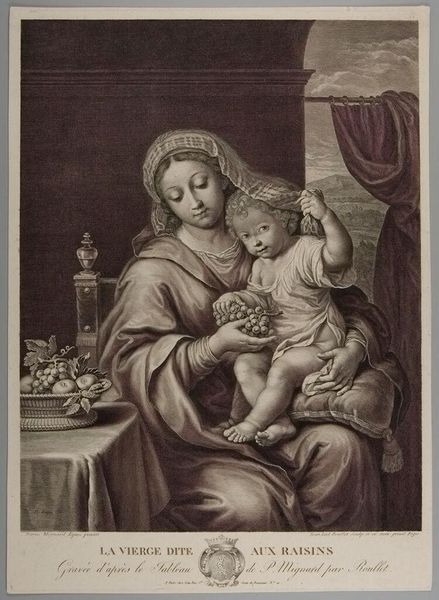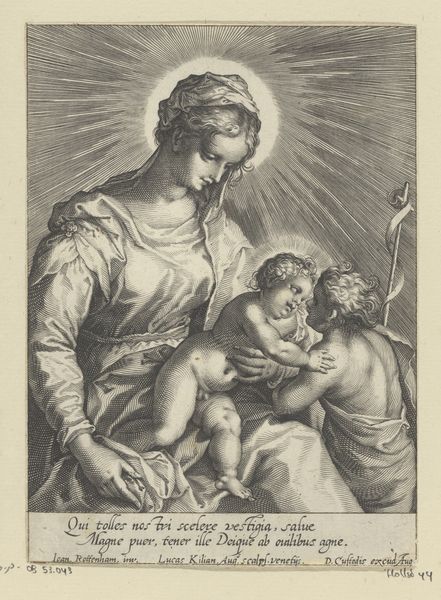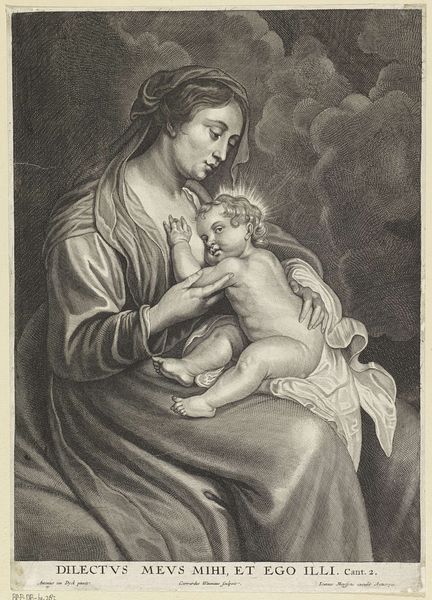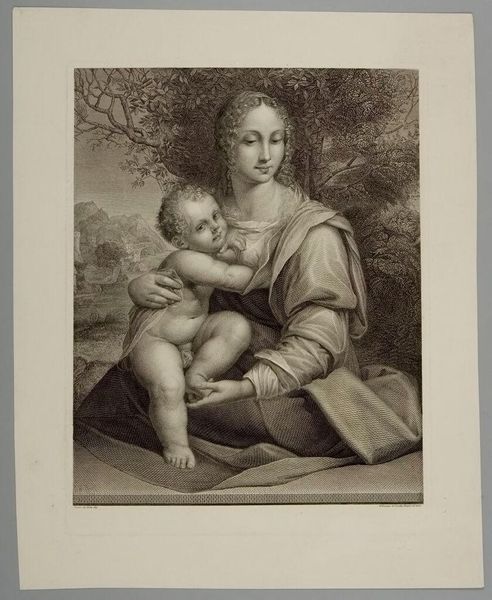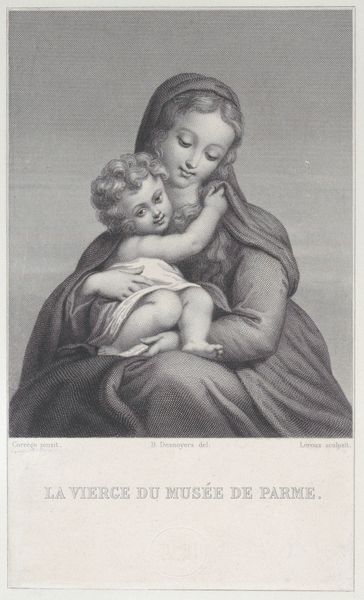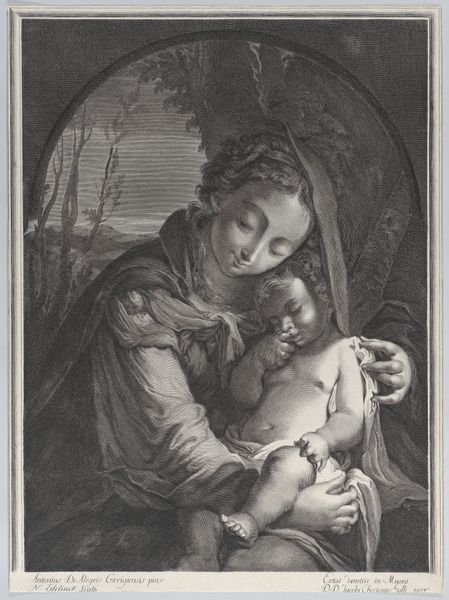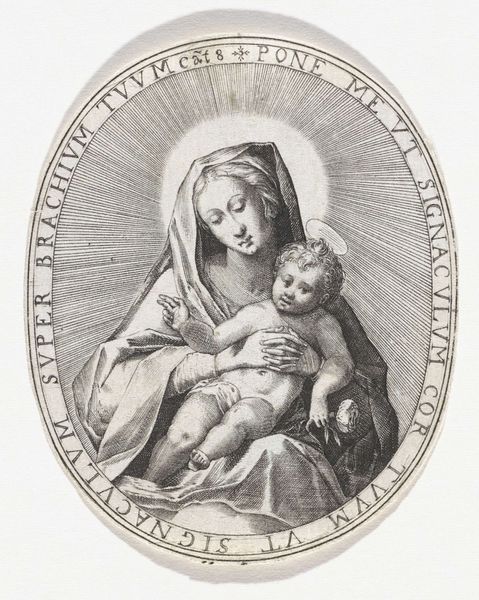
print, engraving
#
baroque
# print
#
old engraving style
#
caricature
#
framed image
#
portrait drawing
#
genre-painting
#
northern-renaissance
#
engraving
Dimensions: height 204 mm, width 148 mm
Copyright: Rijks Museum: Open Domain
This print of the Virgin and Child was made by an anonymous artist. In the absence of the painter’s name, we can still consider the social conditions that shaped its production. Devotional prints like this one were common across Europe, and especially in the Netherlands, by the 17th century. The print medium allowed for the mass production of religious imagery. The institution of the church played a significant role in shaping the demand for such works. These images could reinforce religious teachings, spread specific theological views, and encourage personal piety among believers. The print's composition and style reflect specific artistic conventions and cultural values. The serene expression on Mary's face and the tender embrace between mother and child evoke feelings of compassion, love, and maternal care. To understand these images better, we delve into religious texts, social histories of the family, and the economics of printmaking. Through such research, art reveals its profound connections to its time.
Comments
No comments
Be the first to comment and join the conversation on the ultimate creative platform.



